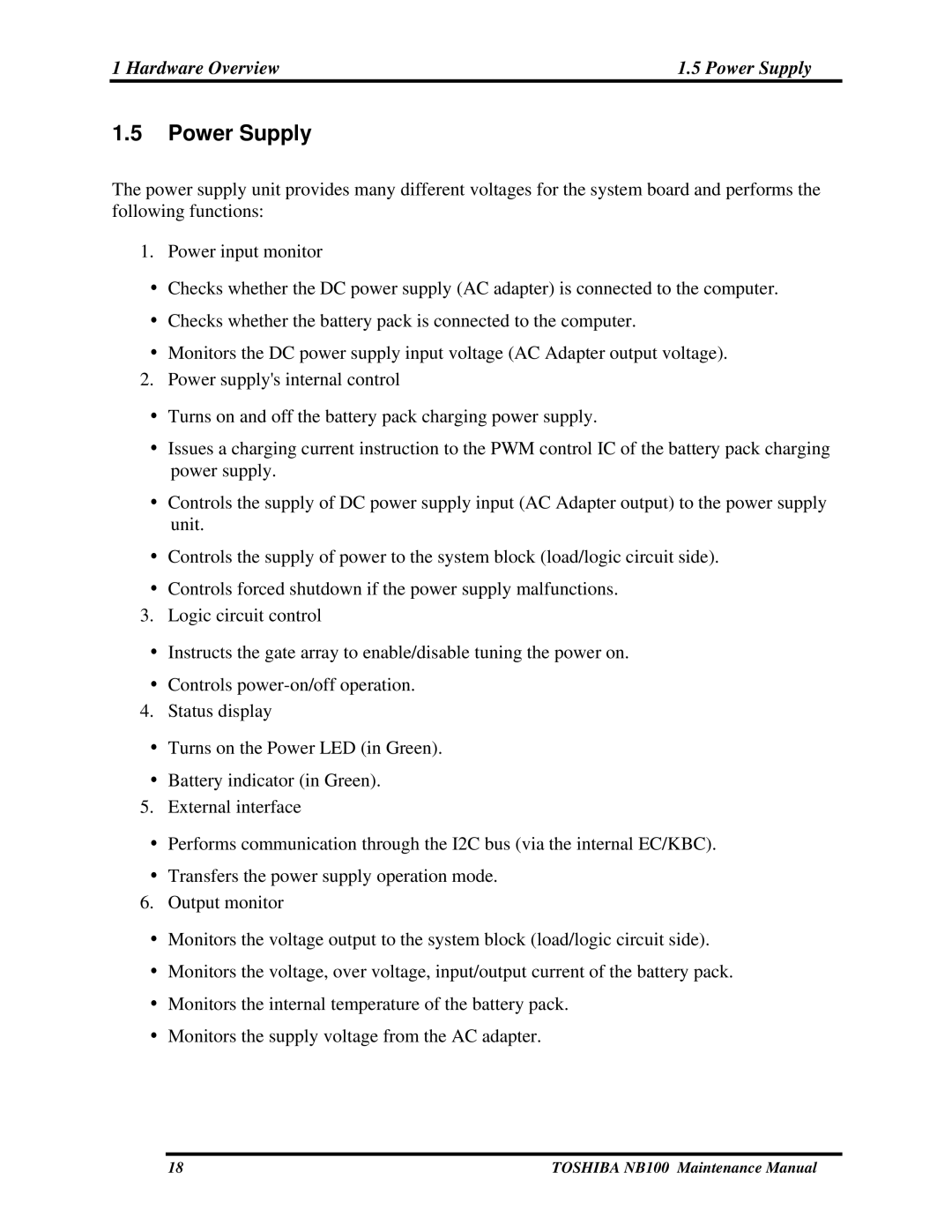1 Hardware Overview | 1.5 Power Supply |
1.5Power Supply
The power supply unit provides many different voltages for the system board and performs the following functions:
1. Power input monitor
yChecks whether the DC power supply (AC adapter) is connected to the computer.
yChecks whether the battery pack is connected to the computer.
yMonitors the DC power supply input voltage (AC Adapter output voltage).
2.Power supply's internal control
yTurns on and off the battery pack charging power supply.
yIssues a charging current instruction to the PWM control IC of the battery pack charging power supply.
yControls the supply of DC power supply input (AC Adapter output) to the power supply unit.
yControls the supply of power to the system block (load/logic circuit side).
yControls forced shutdown if the power supply malfunctions.
3.Logic circuit control
yInstructs the gate array to enable/disable tuning the power on.
yControls
4.Status display
yTurns on the Power LED (in Green).
yBattery indicator (in Green).
5.External interface
yPerforms communication through the I2C bus (via the internal EC/KBC).
yTransfers the power supply operation mode.
6.Output monitor
yMonitors the voltage output to the system block (load/logic circuit side).
yMonitors the voltage, over voltage, input/output current of the battery pack.
yMonitors the internal temperature of the battery pack.
yMonitors the supply voltage from the AC adapter.
18 | TOSHIBA NB100 Maintenance Manual |
